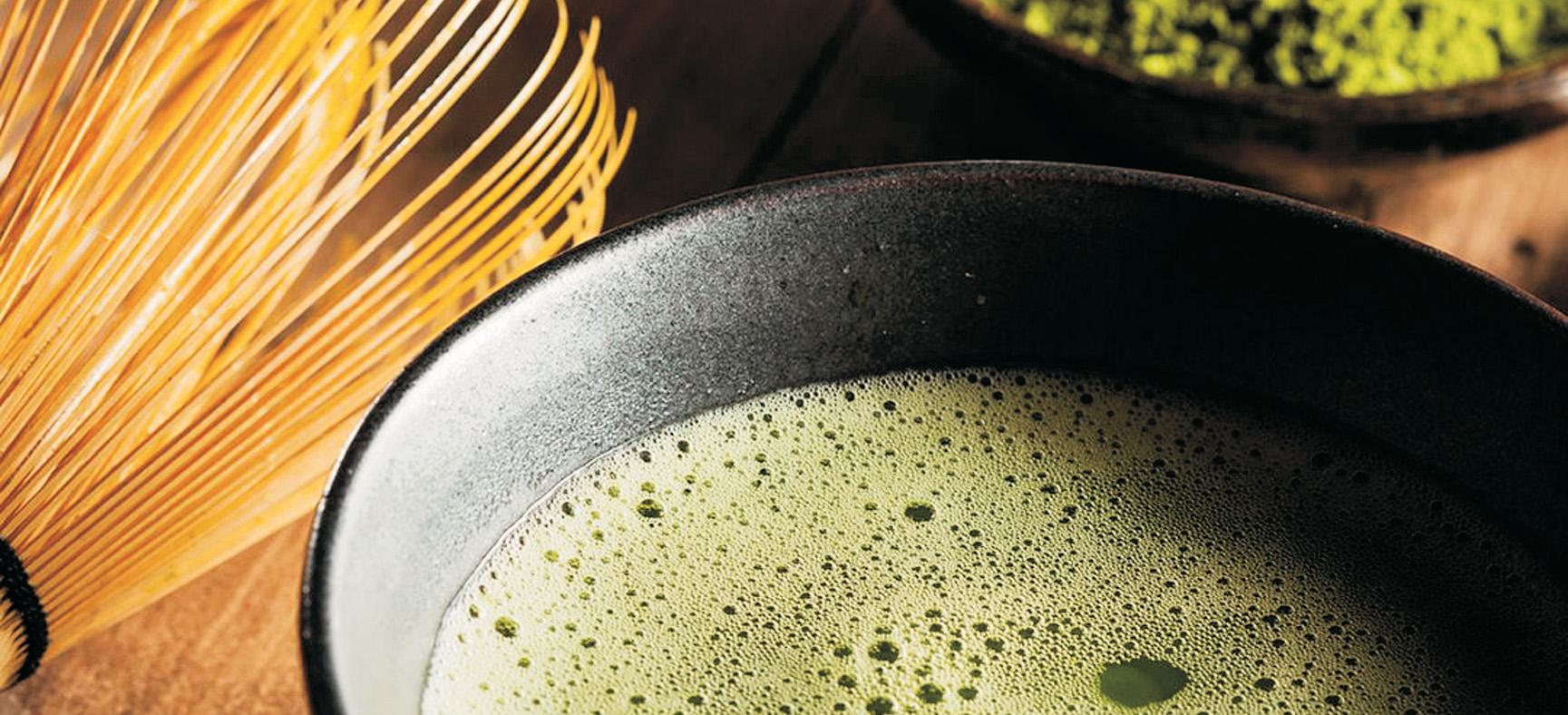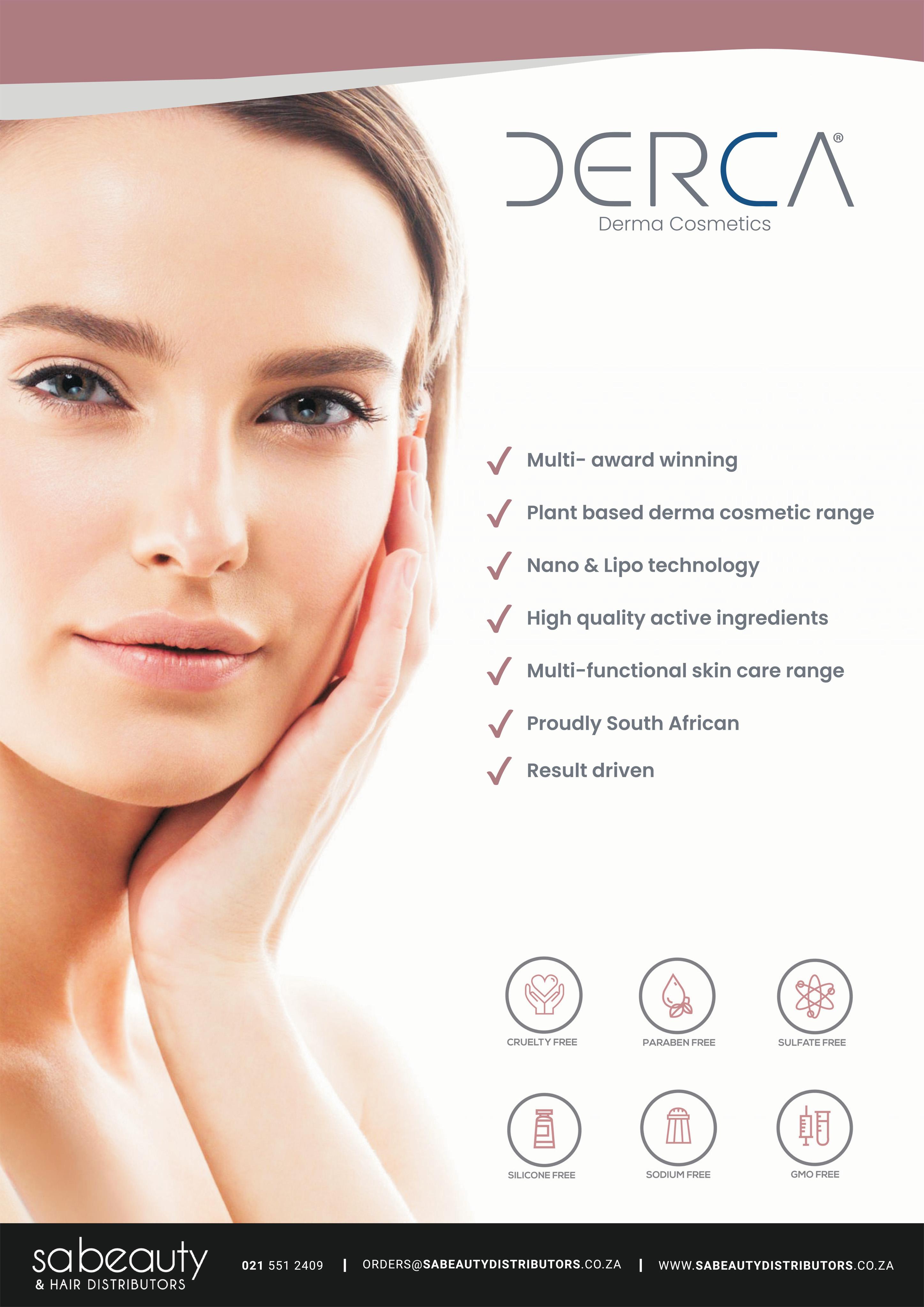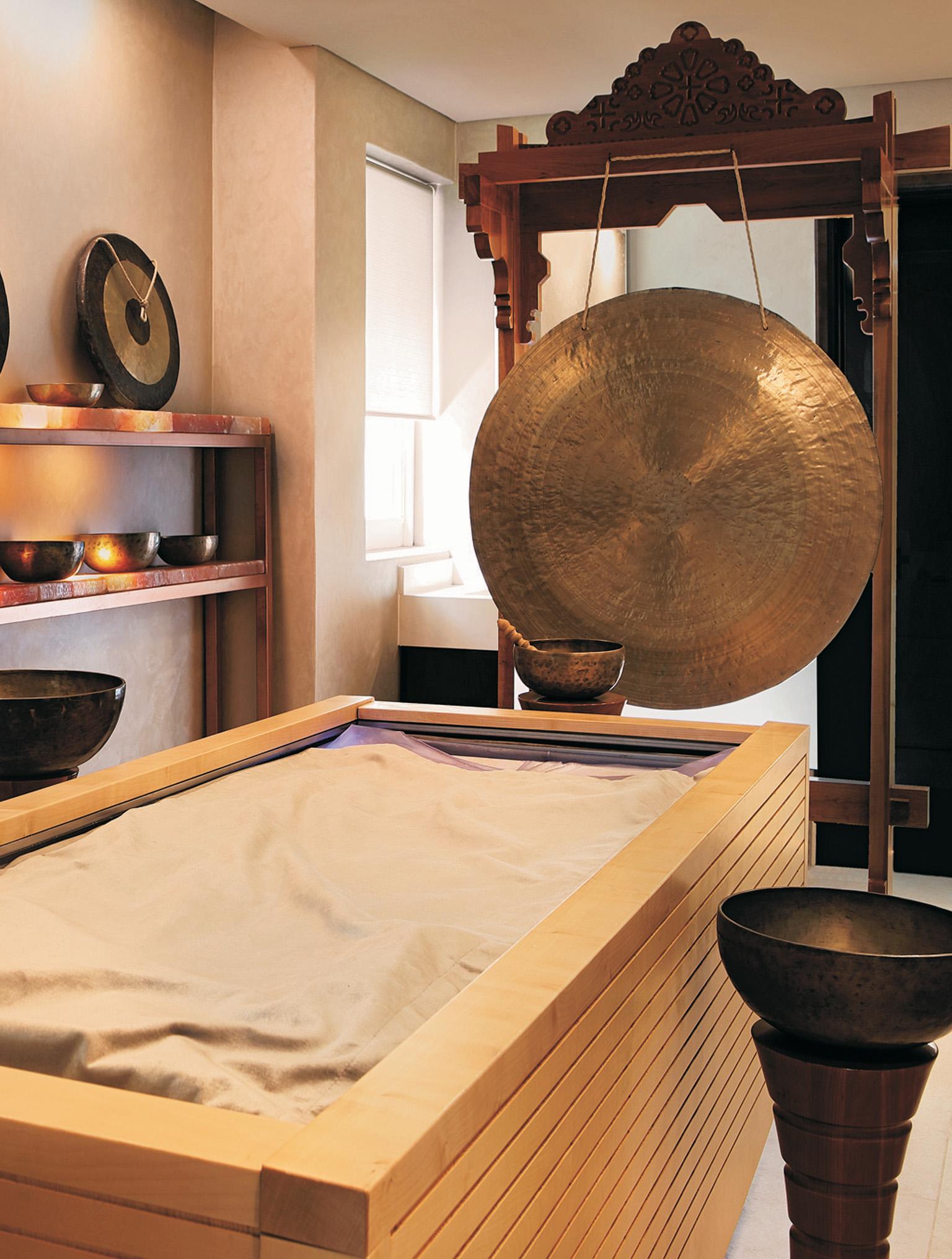
12 minute read
The Music Industry’s Wellness Pivot
An Essential Guide to Tea And Health

Advertisement
Ever since Chinese folklore told tales of leaves from an overhanging camellia sinensis plant that fell into Emperor Shennong’s cup of boiling water in 2737 B.C., tea has been known by cultures around the world for its power to soothe, restore, and refresh. Far from being a fictitious promise, tea has been extolled for a myriad of potential health advantages, from reducing heart disease to even improving dental health and aiding weight loss.
Tea is undoubtedly an excellent source of nutrition for your health. First things first. Make sure your “tea” is indeed tea. True tea is derived from the camellia sinensis plant and has four main varieties, which are green, black, white, and oolong. Herbal teas are an infusion of a different plant and aren?t, technically, tea.
Tea And Your Heart
According to the Academy of Nutrition and Dietetics, the antioxidants found in tea benefit heart health. You can help increase your daily antioxidant intake by drinking tea, widely known to be rich in a particular group of antioxidants called flavonoids. For example, there is about eight times the amount of antioxidant power in three cups of tea than there is in one apple. Research focused on the relationship of black tea consumption and heart health reported decreased incidences of heart attacks. Drinking green tea was linked to lower total cholesterol, LDL, and triglycerides and higher HDL, which are the good cholesterol levels. It might also help protect against cardiovascular and degenerative diseases.
Despite popular thinking, green tea does not always have less caffeine than black tea. The amount of caffeine content may vary depending on the plant varietal, processing, and brewing methods. According to research, the caffeine content of green tea ranges from 24 to 40 mg per cup and black tea ranges from 14 to 61 mg per cup. Both green and black tea contain antioxidants that are beneficial for health. Studies have shown that black tea has similar property benefits, as well. In each case oxidation or non-oxidation gives the tea a different set of antioxidant compounds.
Tea and Your Teeth one cup of green tea per day was associated with considerable decreased odds of tooth loss. Other research has stated that tea may lower the pH level of the tooth’s surface, which suppresses the growth of periodontal bacteria.
Tea and Your Weight
Studies that used tea extracts showed evidence of tea as a weight-loss aid. Though these results may not be directly applicable to brewed tea consumed in normal amounts, as stated by the Academy of Nutrition and Dietetics. In another study, participants who regularly consumed hot tea had a lower waist circumference and a lower BMI than non-tea drinkers. Scientists speculate that drinking tea regularly lowers the risk of metabolic syndrome, which increases the risk of diabetes, artery disease, and stroke. It’s also essential to keep in mind that correlation does not always equal causation.
Here is a list of additional health benefits according to Time magazine that are linked to tea consumption:
•Scientists have found that tea can boost exercise endurance, as the antioxidants found in green tea extract increases the body’s ability to burn fat as fuel, which is responsible for improved muscle endurance. Green tea has also been found to improve bone mineral density and strength. •Although our bodies are designed to fight free radicals on their own, it’s not 100 percent effective. Tea helps to fight free radicals, as it is high in ORAC (Oxygen Radical Absorbance Capacity), another way of saying it aids in destroying free radicals. •Despite the caffeine, tea can hydrate the body. •Drinking tea has been linked to a lower risk of Parkinson’s disease in both men and women. •Green tea may act as a backup sunscreen, as it can provide protection from ultraviolet rays. •It may also counteract some of the negative effects of smoking and may even lessen the risk of lung cancer, although this is not a justification to smoke. •Tea could be beneficial to those who have type 2 diabetes. Studies have suggested that compounds in green tea could help diabetics to process sugar better. •Tea might be an efficient agent in the prevention and treatment of neurological diseases, especially degenerative diseases like Alzheimer’s. While many factors influence brain health, polyphenols in green tea may help maintain the parts of the brain that regulate learning and memory.
Although most research on tea is extremely positive, there are some things to keep in mind before embarking on your very own tea tale. Always give your cup of tea several minutes to cool down before taking a sip, because repeatedly drinking hot beverages may put you in risk of esophageal cancer. Also, all tea drinks are not created equally. The tea’s variety, canning, processing, and the way it was brewed might determine our bodies’ access to its positive attributes.
•According to Boston’s School of Medicine, black tea reverses the abnormal functioning of blood vessels, which may lead to strokes and other cardiovascular conditions. •As hot brewed beverages can offer relief from asthma, so can black tea. It expands the air passage, thereby allowing patients to breathe more easily. •Black tea can aid digestion, as it is rich in abundant tannins, anti-inflammatory properties, and other chemicals that have a positive and relaxing effect on the digestive system. •Research conducted by the American Heart Association in New Orleans stated that people who consumed three to four cups of black tea a day showed fewer signs of heart problems than those who didn’t consume tea at all.
If you needed some extra motivation for getting your kettle on the stove today, there you have it! Pour yourself a cup and bask in the plentiful health benefits of each sip.
By Caroline Russell
About Caroline Russell is the executive chairman of BOH Tea. A Malaysian citizen of British ancestry, Caroline was born in Kuala Lumpur. Her involvement with the family business began in1988 when she joined BOH’s marketing department.In 2017, she became the executive chairman.With BOH’s commitment to nurture a sustainable future, Caroline steered strategic collaborations on conservation and educational initiatives with local and regional environmental non-governmental organizations. To date, BOH has partnered with WWF-Malaysia, Malaysian Nature Society, Global Environment Centre, and Tropical Rainforest Conservation and Research Centre to drive public awareness on the environment.

The Music Industry’s Wellness Pivot:

A New Wave of Chill-out, Medit:tive Music to Calm Us During the Pandemic

By By Beth McGroarty - Global Wellness Summit
From the music industry pivoting to “wellness” music to new technologies that capture our biometric data to create personalized, healing soundscapes — music is undergoing a sudden wellness transformation.
We all self-medicate through music: We’ve all got our “I’m stressed” or “I need energy” playlists. But most people don’t fully grasp just how much they depend on music to manage their emotions or just how powerful the medical evidence for music therapy is. Studies reveal that not only are humans hardwired for music, but they also agree that no other stimulus positively activates so many regions of the human brain (from the amygdala to the hippocampus)— with unique powers to boost mood and memory. But when you think of formal “music therapy,” it conjures up dowdy, dusty greige offices in some school or medical outbuilding, with patients wearing Soviet-era headphones.
Suddenly, something big is happening. Music as an intentional therapy is being radically reinvented. Music is emerging as one of the hottest trends in wellness, and wellness concepts are shaking up the massive music industry. “Wellness music” is being born, and the trend takes so many forms. Funding for medical studies on music’s impact on the brain is really heating up, with researchers using biofeedback, AI and machine learning to identify how music’s structural properties (beat, key, chord progression and timbre) specifically impact biometrics such as heart rate, brain waves and sleep patterns—so they can develop music as precision medicine for everything from pain to PTSD.
The mainstream music industry is going through a wellness transformation: from an explosion of healing playlists on the big streaming sites such as Spotify to new artists and audiences for ambient and “New New Age” music to musicians incorporating all kinds of wellness experiences into their concerts. The newest and biggest meditation apps are fast morphing into wellness music apps, with goliaths such as Calm even planning to become a whole “new kind of label” for artists to launch music for wellbeing. Fueling the Trend
Evidence that music is strong medicine—with more studies un-riddling its unique brain mechanisms ahead
Stringent meta-reviews show music’s eye-opening impact on depression, anxiety and pain—and everything from its power to improve social skills in kids with autism to being a stronghold against Alzheimer’s, as memories of music don’t get lost to the disease. A key, recent focus has been more hospitals around the world using music therapy before surgery, as new studies like one from the University of Pennsylvania reveal that music is as powerful as a sedative in reducing patients’ anxiety.
More research is now untangling the brain mechanisms involved in listening to music and investigating the right dosages: The British Academy of Sound Therapy just found that 78 minutes daily is optimal for improving mental health. And there’s more research into evidence-based acoustic sound design: what frequencies (measured in hertz), decibels, beats, tones, etc. have the most powerful impact, and for what outcomes. The potential of music therapy is so immense and untapped that the National Institutes of Health (NIH) just awarded $20 million to fund a Sound Health Initiative that will undertake studies to uncover music’s mechanisms of action in the brain, as well as to identify a host of new interventions, from treating symptoms of pain, PTSD, Parkinson’s disease, stroke, autism and dementia to music’s impact on childhood development. This is a huge step: serious money for serious science to understand music’s serious potential for improving human wellbeing.
Culture shift: Exhausted by screens, we’re taking sanctuary in sound
With the average person now spending 6.5 hours+ a day in front of screens — bombarded by bad news, endless work, and social media strutting— there’s a distinct shift underway: a retreat from visual/digital culture into music and sound. This flight into music is being led by millennials/Gen Z: A recent global Spotify survey of 15- to 37-yearolds found that one of the five defining traits of this young demographic is that they (56 percent reporting) “use audio as an escape from their screens,” and audio is a “huge part of their everyday lives.”
It’s not just the kids: A recent Sonos global survey showed the many ways all people use music to boost their wellbeing: Roughly 75 percent report they listen to music to reduce stress, and that listening to music is key to producing their best work.
You see the flight from visual to audio culture—from our exhausted eyes to our newly open ears—in the skyrocketing adoption of podcast-listening: Thirtysix percent of the world’s population has listened to podcasts in the last month. You see it in new music listening centers, like the rise of cool, new “listening bars” that mix community and cocktails with big vinyl listening libraries, so huge in Toyko at places such as Baobob or Paper Moon, and spreading around the world to places such as Bar Shiru in Oakland, California, or Tokyo Record Bar in New York City. You see it in hot real estate trends, including the rise in “listening rooms,” a home space where meditation can be taken with music, and with predictions that these wellness rooms loaded with state-of-the-art audio/AV equipment are “the new home theaters.”
Stream your wellbeing: The music industry pivots to wellness
From an explosion of healing wellbeing playlists on the big streaming sites to new, big audiences for ambient and “New New Age” music to musical artists incorporating all kinds of wellness into their concerts, the mainstream music industry is experiencing a serious wellness transformation. “Wellness” is becoming a new mode of listening— beyond the artist or genre.
Spotify, Apple Music, YouTube and other streaming sites are increasingly serving up playlists that focus on mood-changing, stress-reducing, helppeoplesleep, focus-enhancing, meditative, improve-yourworkout music and soundscapes—making wellness music a core homepage channel. There are now endless loops of trance-y and tranquilizing music or channels for specific wellbeing intentions, and they boast millions of subscribers. Spotify is spawning “chill playlists” such as “Deep Focus,” “Peaceful Piano” and “Ambient Chill.”
Brand-new apps such as myndstream (from the founders of the entertainment group that made emotional music for shows such as Game of Thrones and House of Cards) create music to specifically drive daily wellbeing goals, with tracks for focus, meditation, movement, relaxation and sleep, that can be accessed on Spotify and Apple Music.
Both ambient and New Age music are finding big new audiences, as more people seek immersion in blissed-out sonic spaces and sound healing rather than power anthems or raps. NPR recently explored how ‘60s/70s New Age music (once cringeinducing for many, with its sounds of birdsong and ethereal synthesizers) is seeing a cool new wave of artists and approaches, such as Los Angeles’ Matthew David and Kaitlyn Aurelia Smith.
More artists are incorporating experiences that you would find at a wellness resort into their performances: Artists such as Erykah Badu and bands such as Sigur Ros are having mass sound baths at their concerts, while Jhene Aiko’s recent concerts included guided meditations, sound baths, mantra-chanting and aromatherapy. The music + wellness festival just continues to surge. The behemoth music fests such as Latitude or Glastonbury keep adding more wellness areas/experiences, the latter recently featuring everything from indigenous spiritual elders to workshops on ayahuasca. In the future, we will see more live music meditation and full-blown “audio-wellness” festivals, such as Soft Landings planned by Morning Gloryville Founder, Samantha Moyo. Forecasting the Future
•Given music’s incredible potential as a mental wellness intervention, it’s actually odd how little innovation there has been around designing music/ sound experiences that could actively change our brains. Change has come. Music created (and listened to) as intentional medicine will be a rising trend in 2020 and beyond.
•Funding for medical studies on music’s impact on the brain are heating up. Researchers will use biofeedback, AI and machine learning to identify how music’s structural properties abeat, key, chord progression, etc.) impact biometrics such as heart rate, brain waves and sleep patterns—so music can be developed as precision medicine for everything from pain to PTSD.
•The wellness music (and music-as-wellness) trend is being driven by people’s exhaustion with screens and visual/digital culture; they’re hightailing it into sound. During the Coronavirus, while video streaming is up 85 percent, music-stre:ming apps have dipped 8 percent. We need to stop compulsively checking the bad news, detach from screens, and listen to more music. In the long months ahead, more people will—and they’ll have many more music-forwellbeing platforms to flee to.










